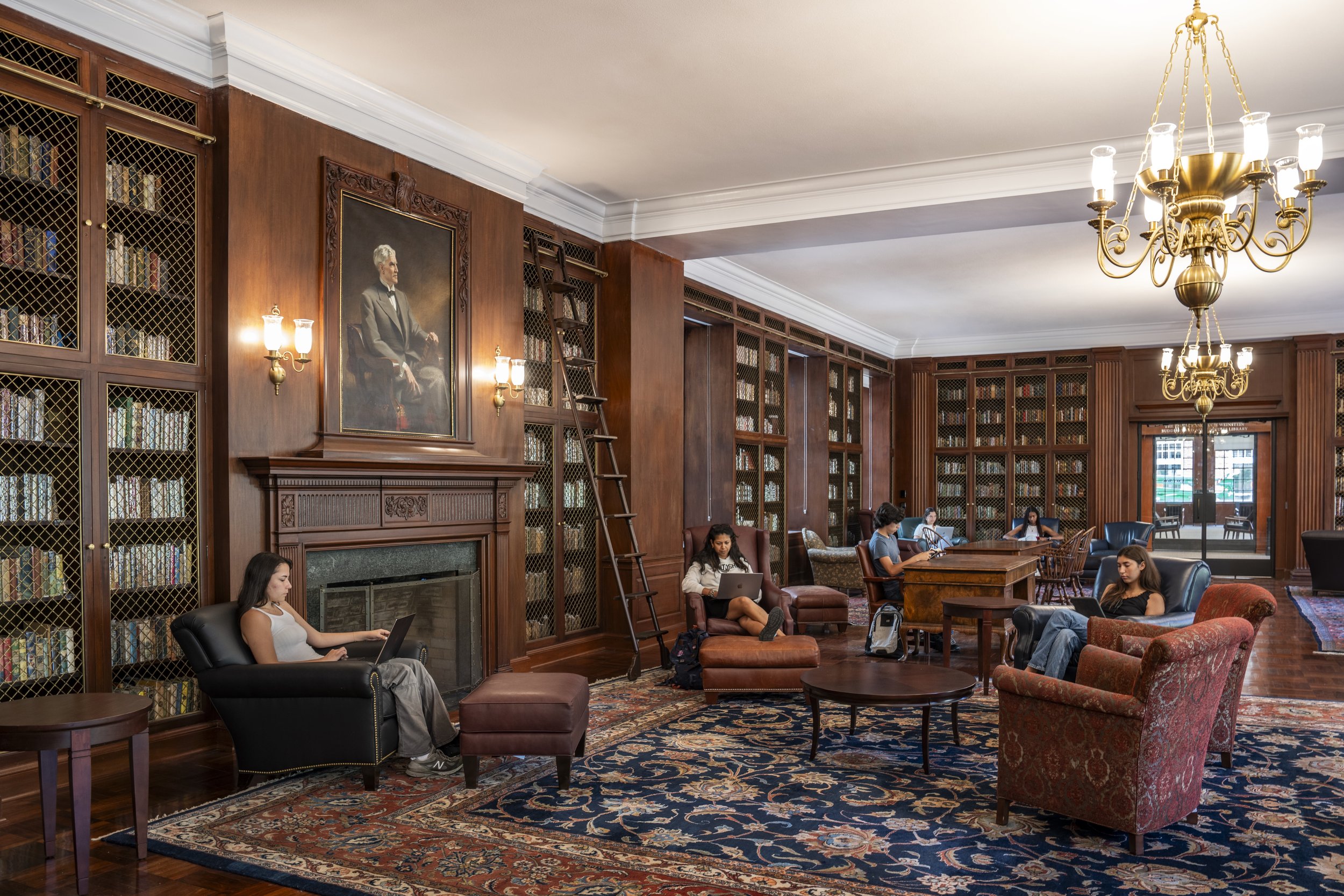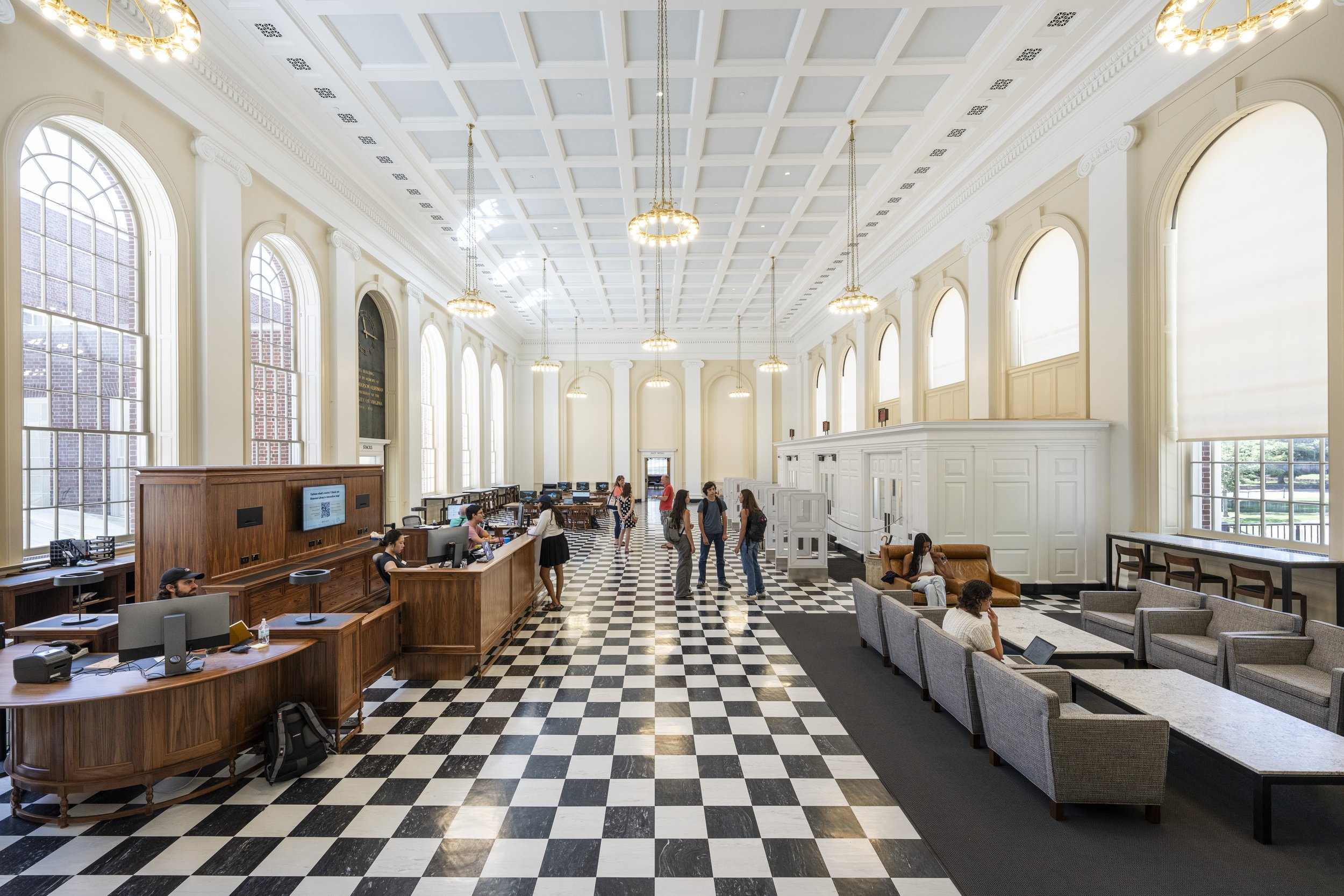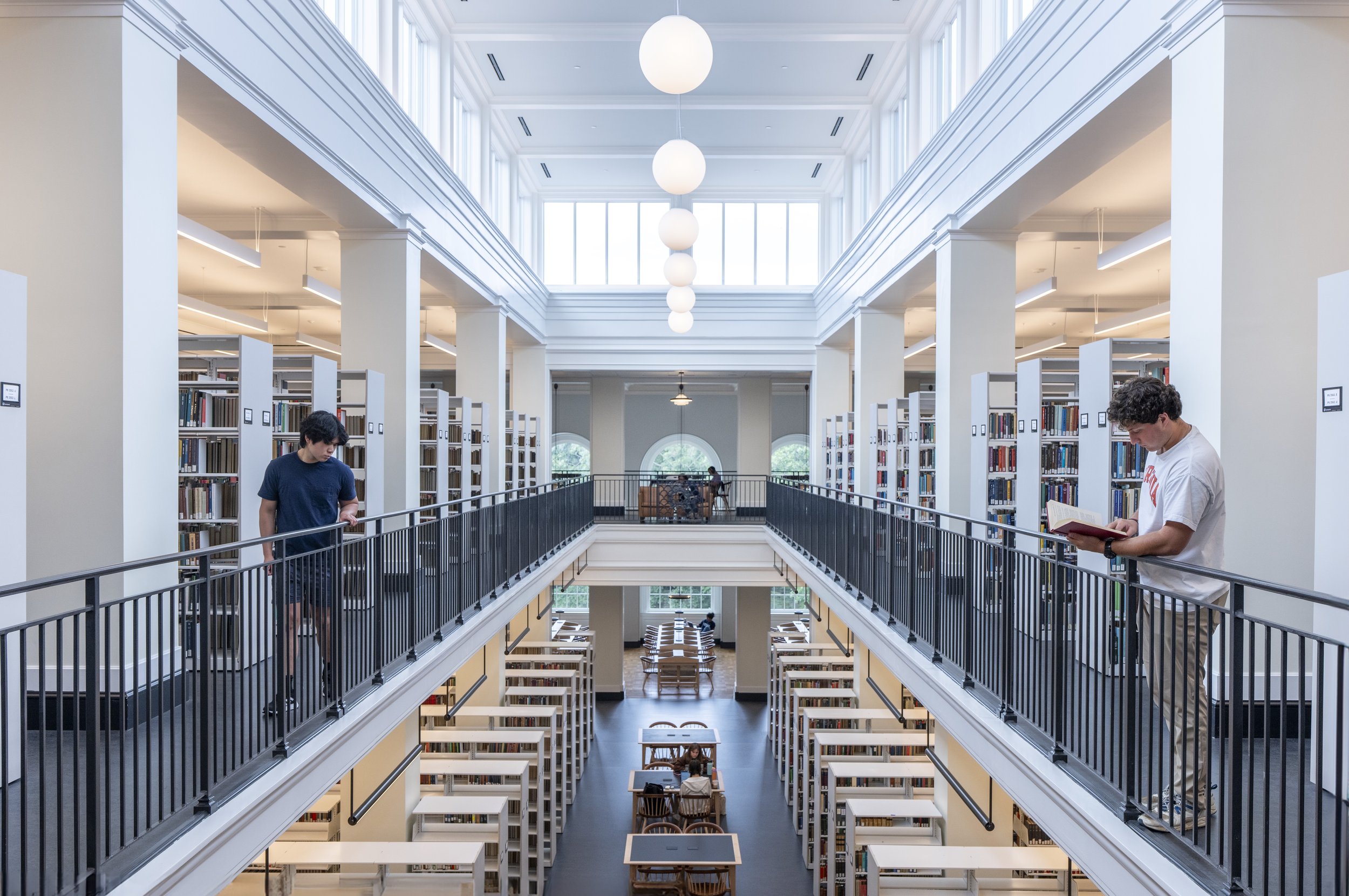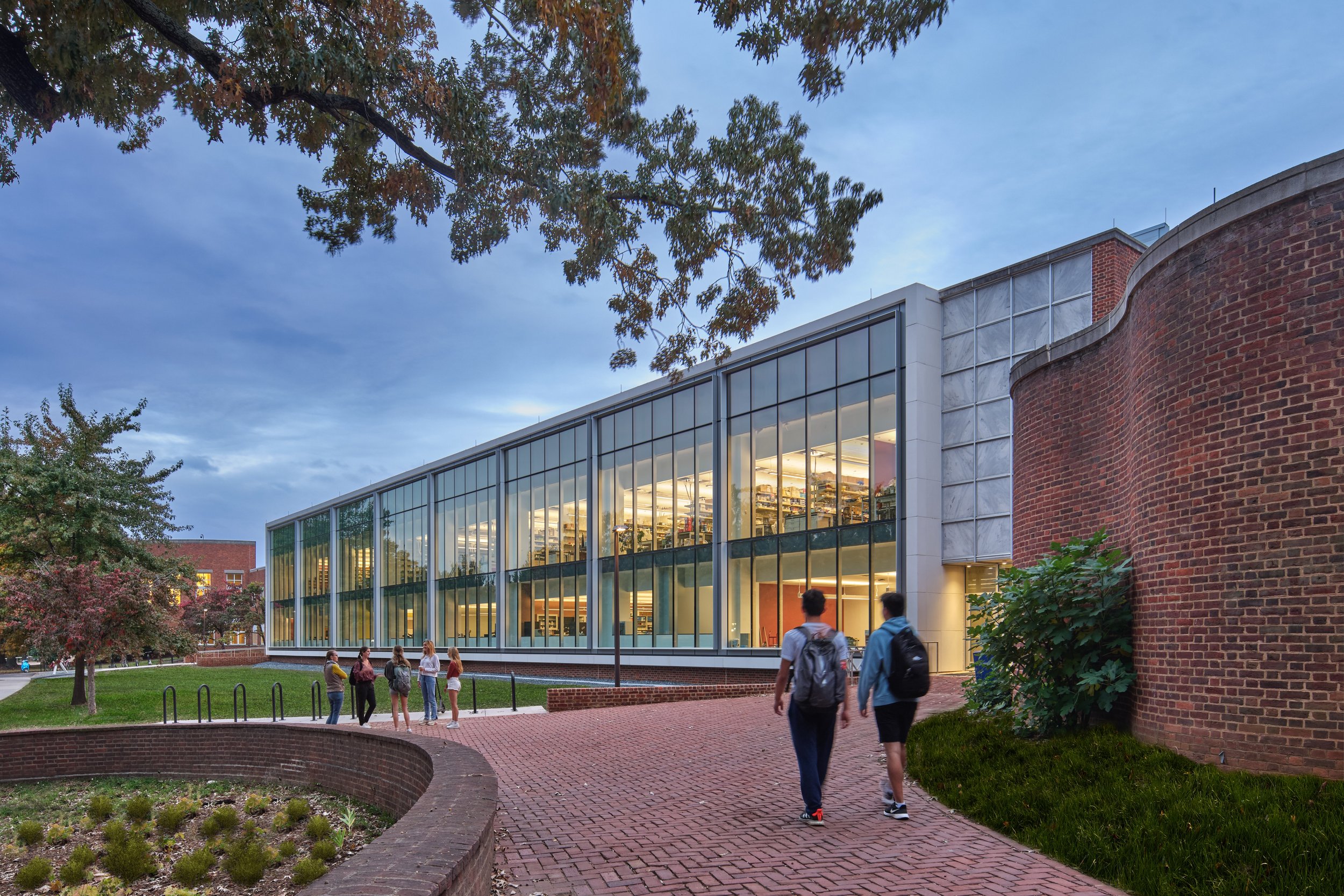Location
Charlottesville, VA
General Contractor
Jamerson-Lewis Construction
Size
107,000 sq. ft.


Photo Credit | XScope
Our team completed an extensive renovation project for the UVA Physics Building, a 107,000-square-foot facility serving as a vital hub for classrooms, labs, and research spaces. The renovation aimed to modernize the building’s systems and bring the labs up to date with state-of-the-art technology, ensuring reliable functionality for the university’s expanding research and teaching needs. The building, which consists of four main floors plus a partially converted attic space, required a phased renovation approach due to its active use throughout the project.
Flexible Power Solutions with Bus Duct
One unique aspect of the renovation was the installation of bus ducts throughout the labs. These bus ducts, which run through the ceilings in straight, T, or L configurations, allow for flexible power connections. This setup is critical for UVA’s high-tech lab equipment, enabling the university to easily move or reconfigure equipment as research needs evolve. With plug-in units for varied amperage and connection types, the bus ducts give the building’s electrical system flexibility and adaptability.
Managing Active Phases and System Integration
The renovation included significant challenges with phasing, as each phase required portions of the building to remain operational. Systems like lighting and fire alarms needed to be functional at nearly full capacity for occupied areas, even as we worked to extend and integrate these new systems with existing infrastructure. Our team, alongside Hudson Payne for fire alarm integration, skillfully managed this complex interplay, ensuring safety and functionality during each transition.
Project Completion and Final Transformation
By the project’s end, we transformed the UVA Physics Building into a fully modernized facility. Our team’s dedication to phased logistics and adaptive problem-solving allowed us to meet UVA’s high standards, resulting in a safe, efficient, and future-ready space for cutting-edge scientific exploration.
Phased Approach and Project Expansion
Initially, the project was planned in three phases, but complexities in scope led to additional phases, breaking Phase 1 into 1A and 1B. This adjustment allowed us to address unforeseen challenges and ensure comprehensive updates were made in every section. The scope included a complete remodel of the electrical service, installation of a new generator, and extensive upgrades to the power infrastructure. Essentially, the entire building was overhauled electrically, with new systems to support the cutting-edge needs of UVA's labs.
Advanced Lighting and Sustainability Integration
For lighting, we integrated advanced controls from Acuity, including daylight harvesting, dimming, and occupancy sensors, to enhance energy efficiency. The building achieved LEED certification, aligning with UVA’s sustainability goals. In line with the high-tech overhaul, all lighting controls and sensors were calibrated to provide optimal light management across classrooms, labs, and common areas.
Overcoming Power Distribution Challenges
Another logistical challenge involved updating the building’s power distribution while keeping essential services uninterrupted. We tackled this by carefully intercepting and rerouting branch circuits from older panels. Temporary power feeds were strategically installed to support ongoing activities as we replaced main panels and overhauled circuits floor by floor. This required precise coordination and on-the-spot problem-solving by our superintendent to maintain service continuity while progressing with the renovation.










